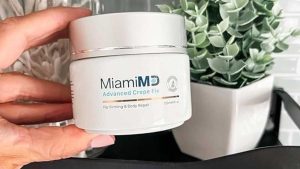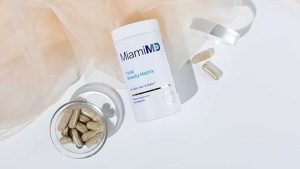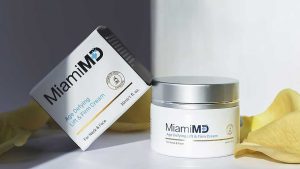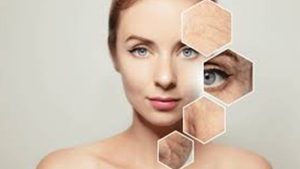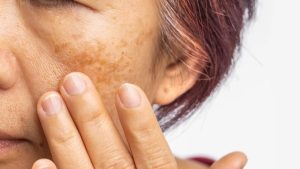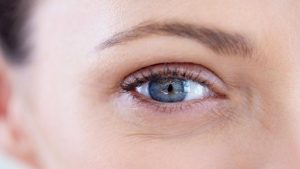How To Correct and Remove Dark Spots on Your Face

When it comes to dark spots on the face, people will often try anything that they can to get rid of them. Some people will even go to extreme lengths to remove them, trying folk remedies and expensive medications that promise results but often don’t deliver.
The good news is that there actually are ways that you can both correct and remove dark spots without having to rely on pricey, invasive dermatology procedures. MiamiMD has done the research into the best ingredients for our skincare products to provide you with the results that you’re looking for, without having to go under the knife.
The Scientific Truth Behind Dark Spots
Darks spots are referred to medically as hyperpigmentation. There are two different main types of hyperpigmentation: focal and diffuse.
Focal hyperpigmentation is usually the result of injury or inflammation, which are side effects of acne breakouts, ultraviolet radiation (i.e. sun spots), or scarring after an accident (or from popping pimples). Diffuse hyperpigmentation, on the other hand, is often caused by certain drugs or neoplastic (cancer-related) causes. For this reason, any new dark spots or discoloration should always be evaluated by a physician to rule out any potentially dangerous causes.
While dark spots are far more annoying than dangerous, that’s not always the case.
Another common type of hyperpigmentation is melasma. Melasma is recognizable as being roughly symmetrical in nature with a dark brown color and sharp margins. This type of hyperpigmentation is usually found on the forehead, cheeks, nose, and upper lip, and is even more common in pregnant women and people taking oral contraceptives. It is also found more frequently in people with a naturally darker skin tone.
One other form of “dark spot” is known as lentigines, or liver spots/age spots. They are more oval shaped than other forms of hyperpigmentation, and more smoothly bordered than melasma. Although they are known as liver spots, they actually have nothing to do with liver function.
It’s important to note that not every dark spot is the result of a medical condition, it’s more of a catch-all term. Dark spots can occur in small patches, cover larger areas, and even affect the entire body.
What Causes Dark Spots?
It’s very difficult to really discern one specific cause of dark spots, because they are often due to a variety of factors including simple genetics or everyday skin conditions. While we do know some of the more common risk factors, which we’ll discuss below, they also can “just happen” to anyone of any age.
Most commonly, however, dark spots are seen on women between the ages of 20 and 50.
The vast majority of dark spots are “caused” by either inflammation or sun exposure. This is because both of those factors work to encourage and speed up the production of melanin, the pigment responsible for making the skin darker. The more sun exposure that you have, especially over time, the more likely it is that you’ll experience some sort of hyperpigmentation at some point in your life.
Melanin is the result of specific cells called melanocytes. Melanocytes are located in the basal layer of the top layer of the skin, known as the epidermis. They have what are known as branching processes, which allow them to be able to transfer an organelle responsible for transporting color (called a melanosome) directly into the epidermal cell. Once the epidermal cell has the melanosome inside of it, it darkens in color and becomes more pigmented.
What You Can Do To Correct and Get Rid of Dark Spots
Now that you know a little bit more about what causes dark spots, let’s talk about what you can do to help correct and remove them (or at least reduce their appearance).
A great ingredient to look for in any moisturizer, cream, or serum that claims to correct dark spots is alpha arbutin, sometimes just referred to as arbutin. Arbutin is naturally occurring in nature, mostly from plant sources like pomegranate and mulberry. When you see the “alpha” label attached, it just means that that specific arbutin comes from a synthetic source.
The reason that arbutin works so well at helping to lighten the skin is that it is a derivative for another “holy grail” skin lightening product, hydroquinone. As effective as it can be, though, hydroquinone has the potential to create “cytotoxic” effects on the cells near where it is applied. It may also create a skin issue known as ochronosis, where the skin tissue where it is applied turns a blue-black color.
However, the way that alpha arbutin works is by slowly releasing hydroquinone (which is safe, as opposed to the effects of a large dose at all once) into the skin. As it is absorbs, it inhibits an enzyme called tyrosinase. Tyrosinase is an important target of dark spot correctors, because it is the key enzyme that is responsible for producing melanin. When there is an abundance of tyrosinase in the system, there is also an increase in the pigmentation of the cells and the chance of developing hyperpigmentation. In addition, alpha arbutin is an antioxidant and can work to soothe skin.
Resveratrol is another topical antioxidant that has shown a lot of promise when it comes to lightening up dark spots. It is full of polyphenols, which are plant-based compounds and super nutrients, that can fight visible signs of aging, protect the skin, and help even out and brighten the tone of the skin. It is found naturally in red wine (specifically grape skins) as well as dark chocolate, peanuts and berries. Resveratrol is also great in tandem with other skin products, as so far nothing has been found to make it less effective when combined with it.
And last, but certainly not least, is vitamin C. We can’t say enough good things about this amazing vitamin and antioxidant. In its highest form, ascorbic acid, vitamin C is incredibly potent and works in multiple different ways to not only help brighten the skin and reduce dark spots but also help protect and slow down the signs of sun damage overall. It works much like alpha arbutin to inhibit the release and production of tyrosinase, blocking the formation of more pigment in already dark areas.
When you look for an over-the-counter cream that has all of these ingredients, like MiamiMD’s Dark Spot Corrector, you amplify each of their benefits and have the greatest chance of being able to counteract hyperpigmentation while also brightening the overall skin tone.
Can I Prevent Dark Spots?
While you can’t necessarily prevent dark spots, you can remove many of the factors that may increase your likelihood of dealing with them.
One of the best ways that you can do this is by making sure to limit your direct exposure to ultraviolet radiation, especially if you have sensitive skin or if you use retinoid/retinol products (which make your skin even more sensitive to the sun). That means making a specific effort to wear sunscreen every time you leave the house. While this may sound difficult to remember, choosing a foundation that comes with SPF already in it can help. Dermatologists generally recommend using products that contain at least an SPF of 30, that offer “broad spectrum” protection against both UVA and UVB rays, and are water resistant.
Other good tips to protect the delicate skin on your face from the effects of ultraviolet radiation (and an increased risk of developing hyperpigmentation) include wearing a wide-brimmed hat and sunglasses, as well as finding shade and getting out of the direct sunlight even if you are wearing sunscreen. Make sure to reapply your sunscreen regularly, as well, as its effectiveness will wear off eventually and you will lose protection. Keep in mind that the sun is at its strongest between around 10 am to 4 pm, so take extra precautions during that time period.
Using a gentle exfoliating cleanser or cream like glycolic acid can also help remove the dead skin cells and encourage the more quicker regeneration of the skin cells. While this doesn’t specifically help to prevent dark spots, exfoliation can help skin turnover and collagen production continue at a quicker pace while you’re treating them.
Continuing to use your dark spot corrector even after your hyperpigmentation has faded also works to continue to prevent their reoccurrence in the future. In addition, the ingredients in these correctors keeps your face look at its most radiant.
And finally, as hard as it may be, to help stop the formation of dark spots, you’ll have to stop picking at scabs or other acne scars on your face. The damage that can be caused by picking is part of what causes focal hyperpigmentation, which can be tricky to correct. Use spot treatment on any areas of acne immediately, and start using dark spot corrector right away to prevent them from forming in the first place.
In Conclusion
Dark spots can be frustrating but they don’t have to be something you suffer with for a lifetime.
When you choose the right dark spot corrector, like MiamiMD’s Dark Spot Corrector, that is made with ingredients that have proven results behind them to support your skin’s wellness beyond spot correction, you can decrease your dark spots while you increase your self confidence for the long-run.
Combined with taking other steps toward prevention, like using sunscreen on a regular basis, and you’ll wonder why you waited so long to do something about them!
Sources:
https://www.shape.com/lifestyle/beauty-style/alpha-arbutin
https://www.aad.org/public/everyday-care/sun-protection/sunscreen-patients/sunscreen-faqs
